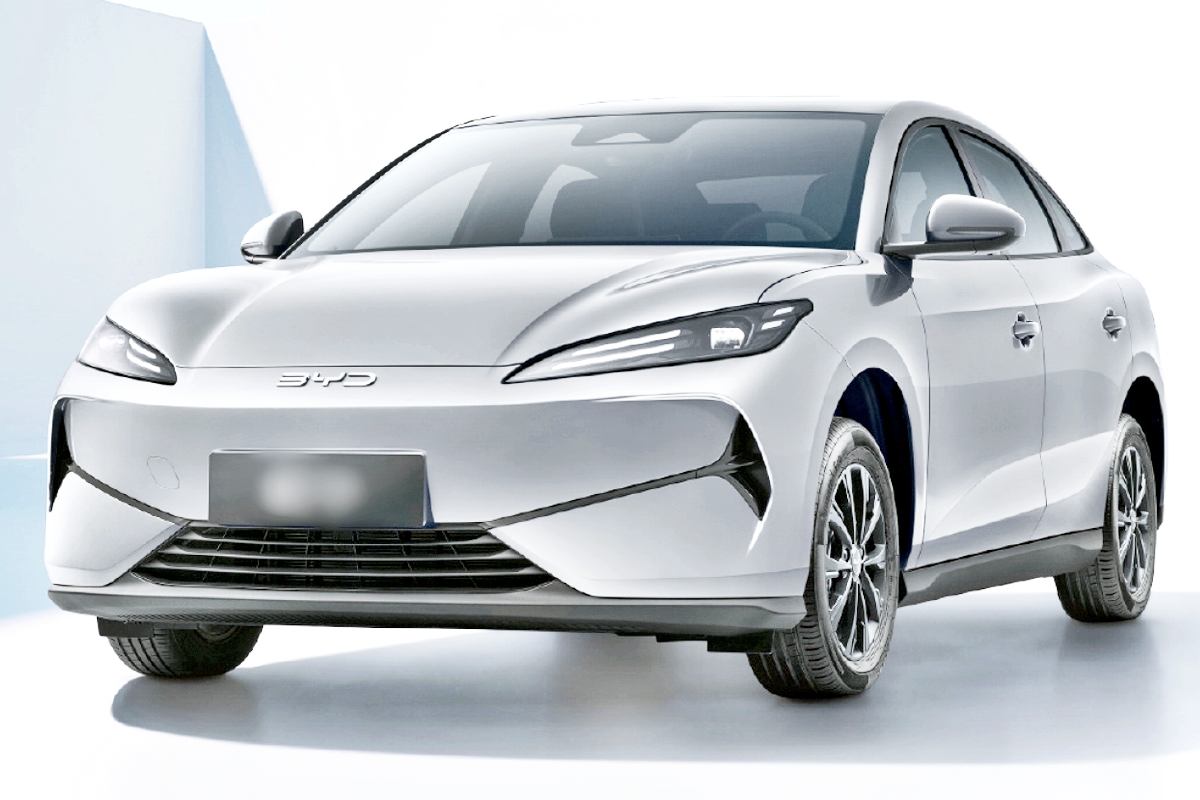
Chinese EV giant BYD unveiled its new e7 sedan, aiming to dominate the fleet market with an affordable pure electric vehicle (EV). The e7, built on a dedicated electric platform, showcases BYD’s market strength again. The launch appears imminent with its official reveal and pending sales certification in China.
The e7 joins BYD’s e-series lineup, part of the broader Ocean series that includes models like the Seal, Dolphin, and Seal U. Designed specifically for cost-conscious fleet operators such as taxi services, the e7 prioritizes low operating costs and ease of maintenance, key criteria for transportation companies.

Latest Design Language Applied, Premium Features Trimmed
BYD’s e7 incorporates the brand’s latest Marine Aesthetic design language. The front end features sharp headlights and a trapezoidal grille, giving it a clean yet confident look. At the rear, split taillights and a simple bumper reinforce a practical design theme. Though it lacks BYD’s signature full-width taillight bar, the styling remains consistent and well-coordinated.
Several premium features have been omitted to reduce costs in line with its fleet-focused purpose. Manual door handles replace retractable types, and the 16-inch wheels appear modest compared to the vehicle’s 187.8-inch body length. Even in what seems to be a higher trim, features like front parking sensors and a 360-degree camera system are notably absent.
Interestingly, a panoramic sunroof appears standard, helping create a brighter, more spacious cabin. This may be offered as an optional delete feature when sales begin.

Larger Than Model 3, Designed for Practical Fleet Use
The e7 is 4,780 mm (187.8 inches) long, 1,900 mm (74.8 inches) wide, and 1,515 mm (59.6 inches) high, with a 2,820 mm (111 inches) wheelbase. These dimensions make it larger than the Tesla Model 3 and suggest a spacious interior. The vehicle’s curb weight, between 1,499 and 1,566 kg (3,305–3,452 pounds), reflects weight-saving strategies to improve efficiency.
The e7 features a front-mounted electric motor delivering 100 kW (approximately 134 horsepower) and a top speed of 150 km/h (93 mph). While detailed battery specs are yet to be announced, BYD confirms using its lithium iron phosphate (LFP) battery technology, which is valued for its safety and long life. These attributes align well with the high-use demands of urban taxi fleets.

Focused on Affordability and Operational Value
With the e7, BYD is entering the fleet vehicle segment. As China accelerates the adoption of eco-friendly commercial transportation, BYD’s emphasis on affordability and low total cost of ownership appears timely. The e7 is expected to target large-scale corporate demand by emphasizing essential functionality and proven electrification technology.
While final pricing has not been announced, analysts expect it to be highly competitive. As a reference point, BYD’s e2 Glory Edition is priced at RMB 89,800 ($12,500). Once details about subsidies, specifications, and after-sales support are released, the e7 could become a strong contender in the electric taxi space.
























